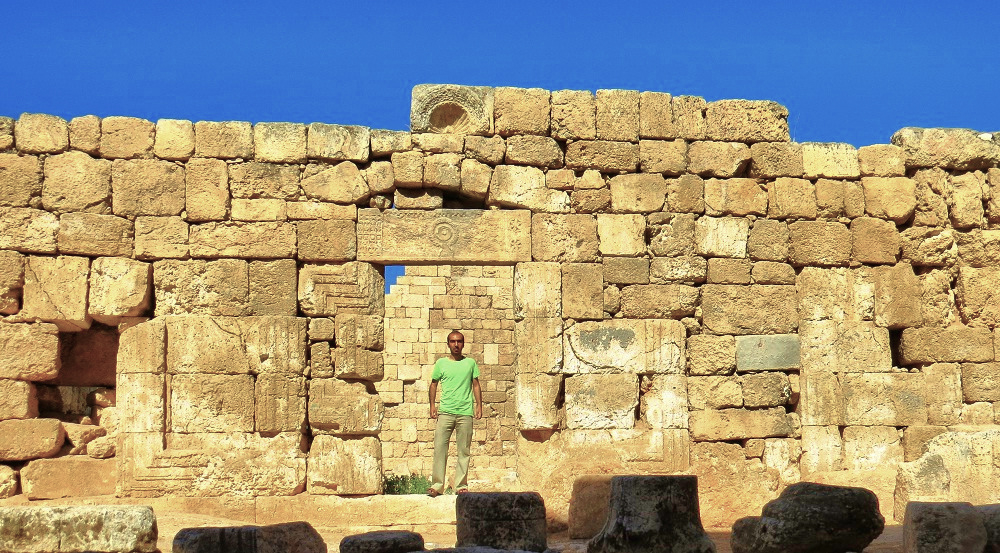|
Hasa Of Eshtemoa
Hasa of Eshtemoa () was an '' amora'' active in Eshtemoa in the Land of Israel during the end of the 3rd-century or beginning of the 4th-century CE. He is mentioned once in the Jerusalem Talmud as being visited by Rav Yasa of Tiberias Tiberias ( ; , ; ) is a city on the western shore of the Sea of Galilee in northern Israel. A major Jewish center during Late Antiquity, it has been considered since the 16th century one of Judaism's Four Holy Cities, along with Jerusalem, Heb .... References Talmud rabbis of Syria Palaestina {{MEast-rabbi-stub ... [...More Info...] [...Related Items...] OR: [Wikipedia] [Google] [Baidu] |
Amoraim
''Amoraim'' ( , singular ''Amora'' ; "those who say" or "those who speak over the people", or "spokesmen") refers to Jewish scholars of the period from about 200 to 500 CE, who "said" or "told over" the teachings of the Oral Torah. They were primarily located in Babylonia and the Land of Israel. Their legal discussions and debates were eventually codified in the Gemara. The ''Amoraim'' followed the '' Tannaim'' in the sequence of ancient Jewish scholars. The ''Tannaim'' were direct transmitters of uncodified oral tradition; the ''Amoraim'' expounded upon and clarified the oral law after its initial codification. The Amoraic era The first Babylonian ''Amoraim'' were Abba Arikha, respectfully referred to as ''Rav'', and his contemporary and frequent debate partner, Shmuel. Among the earliest ''Amoraim'' in Israel were Johanan bar Nappaha and Shimon ben Lakish. Traditionally, the Amoraic period is reckoned as seven or eight generations (depending on where one begins and en ... [...More Info...] [...Related Items...] OR: [Wikipedia] [Google] [Baidu] |
Eshtemoa
Eshtemoa (Heb. אֶשְׁתְּמֹעַ), meaning obedience or "'place where prayer is heard", was an ancient city in the Judaean Mountains, mentioned several times in the Hebrew Bible. It is also the name of two people mentioned in the First Book of Chronicles. Eshtemoa, Judah Eshtemoa was an ancient city in the Judaean Mountains, mentioned several times in the Hebrew Bible. According to the Book of Joshua, It was a Levitical city belonging to the Tribe of Judah, which was allotted, with the common land round it, to the Kohen, priests (Book of Joshua, Joshua 15:50, 21:14). It is later mentioned in the Books of Samuel, 1 Samuel as one of the cities that received spoils following king David's victory over the Amalekites at Ziklag. It was one of the places frequented by King David as a fugitive (1 Samuel 30: 26-28). In the 4th-century CE, Eshtemoa was described by Eusebius in his ''Onomasticon (Eusebius), Onomasticon'' as a large Jewish village.Eusebius, ''Onomasticon - The Plac ... [...More Info...] [...Related Items...] OR: [Wikipedia] [Google] [Baidu] |
Land Of Israel
The Land of Israel () is the traditional Jewish name for an area of the Southern Levant. Related biblical, religious and historical English terms include the Land of Canaan, the Promised Land, the Holy Land, and Palestine. The definitions of the limits of this territory vary between passages in the Hebrew Bible, with specific mentions in , , and . Nine times elsewhere in the Bible, the settled land is referred as " from Dan to Beersheba", and three times it is referred as "from the entrance of Hamath unto the brook of Egypt" (, and ). These biblical limits for the land differ from the borders of established historical Israelite and later Jewish kingdoms, including the United Kingdom of Israel, the two kingdoms of Israel (Samaria) and Judah, the Hasmonean kingdom, and the Herodian kingdom. At their heights, these realms ruled lands with similar but not identical boundaries. Jewish religious belief defines the land as where Jewish religious law prevailed and ex ... [...More Info...] [...Related Items...] OR: [Wikipedia] [Google] [Baidu] |
Jerusalem Talmud
The Jerusalem Talmud (, often for short) or Palestinian Talmud, also known as the Talmud of the Land of Israel, is a collection of rabbinic notes on the second-century Jewish oral tradition known as the Mishnah. Naming this version of the Talmud after Palestine or the Land of Israelrather than Jerusalemis considered more accurate, as the text originated mainly from Galilee in Byzantine Palaestina Secunda rather than from Jerusalem, where no Jews were allowed to live at the time. The Jerusalem Talmud predates its counterpart, the Babylonian Talmud (known in Hebrew as the ), by about a century. It was written primarily in Galilean Aramaic. It was compiled between the late fourth century to the first half of the fifth century. Both versions of the Talmud have two parts, the Mishnah (of which there is only one version), which was finalized by Judah ha-Nasi around the year 200 CE, and either the Babylonian or the Jerusalem Gemara. The Gemara is what differentiates the Jerusalem ... [...More Info...] [...Related Items...] OR: [Wikipedia] [Google] [Baidu] |
Tiberias
Tiberias ( ; , ; ) is a city on the western shore of the Sea of Galilee in northern Israel. A major Jewish center during Late Antiquity, it has been considered since the 16th century one of Judaism's Four Holy Cities, along with Jerusalem, Hebron, and Safed. In , it had a population of . Tiberias was founded around 20 CE by Herod Antipas and was named after Roman emperor Tiberius. It became a major political and religious hub of the Jews in the Land of Israel after the destruction of Jerusalem and the desolation of Judea during the Jewish–Roman wars. From the time of the second through the tenth centuries CE, Tiberias was the largest Jewish city in Galilee, and much of the Mishna and the Jerusalem Talmud were compiled there. Tiberias flourished during the Early Muslim period, when it served as the capital of Jund al-Urdunn and became a multi-cultural trading center.Hirschfeld, Y. (2007). Post-Roman Tiberias: between East and West. ''Post-Roman Towns, Trade and Settle ... [...More Info...] [...Related Items...] OR: [Wikipedia] [Google] [Baidu] |



